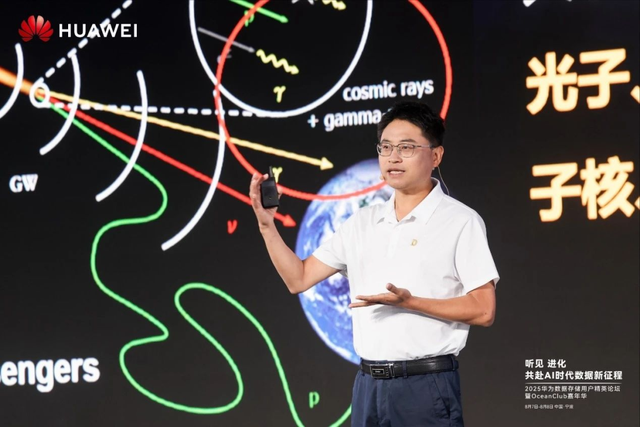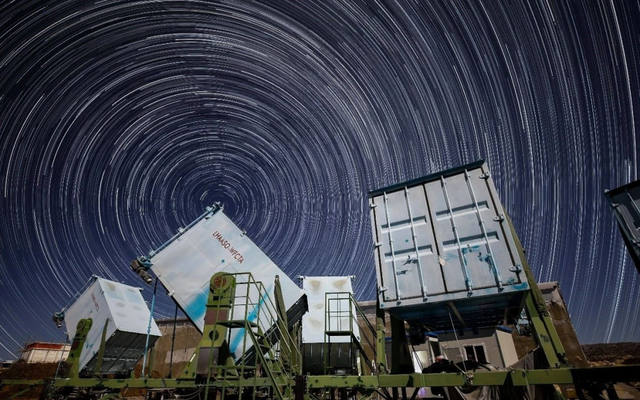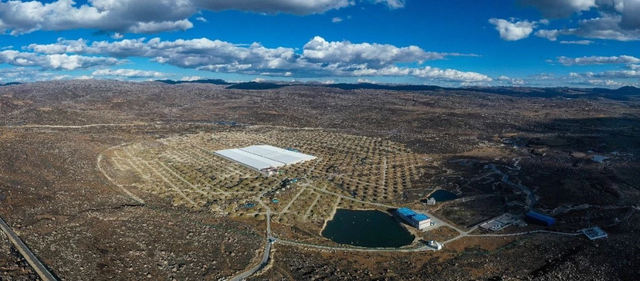Dipping into the Ink of Data, Crafting a Modern "Tian Wen" for the Universe
![]() 08/19 2025
08/19 2025
![]() 413
413

Over 2,000 years ago, Qu Yuan penned the poignant "Tian Wen" with a single stroke of his brush. In this timeless masterpiece, he posed 171 profound questions about the separation of heaven and earth and the cyclical changes of yin and yang. Despite the limitations of his era, which prevented him from witnessing the celestial dance of stars and the fundamental laws of physics, he relentlessly questioned the universe, driven by an insatiable pursuit of truth.
This ancient romance has flowed through the riverbed of time, resonating with humanity to this very day. The innate desire to unravel the vast mysteries of the cosmos and the minute intricacies of particles continues to burn brightly within our genes.

In our digital age, a cohort of individuals has chosen to wield high-energy physics as their writing brush and inkstone, continuing this grand narrative of "Tian Wen."

Among the myriad scientific pursuits aimed at elucidating ultimate truths, high-energy physics stands out as particularly dazzling. Its mission is to decipher the fundamental particles that compose everything in existence, uncovering the structural composition of microscopic substances and their intricate interactions.
From the familiar realms of molecules and atoms to the microscopic wonders of quarks, leptons, and gluons, high-energy physicists employ colossal colliders to accelerate and collide particles, meticulously observing their properties. Additionally, they gaze into the cosmos through advanced astronomical detection devices, capturing cosmic rays in extreme environments.
These data points often bring us tantalizingly close to the origins of all things and the evolution of the universe, where the artistry of the vast and the minuscule converges.

Cheng Yaodong, Deputy Director of the Computing Center at the Institute of High Energy Physics, Chinese Academy of Sciences, shared insights at the Huawei Data Storage User Elite Forum 2025.
Scientists spare no effort in their quest to decode these cosmic messages.
The Institute of High Energy Physics of the Chinese Academy of Sciences (IHEP) has constructed a series of groundbreaking scientific facilities, enabling the Chinese scientific community and all of humanity to continue this celestial inquiry into the origins of everything.
Nestled on the frigid Haizi Mountain in Daocheng, Sichuan, IHEP has erected the "LHAASO," a high-altitude cosmic ray observatory. This colossal net, perched at an altitude of 4,410 meters atop the world, tirelessly captures countless "extraterrestrial visitors" – cosmic rays – day and night.

"LHAASO," beneath the starry expanse, stands as the world's largest and most sensitive ultra-high-energy gamma-ray detector. In 2022, it meticulously recorded the entire collapse and explosive demise of a "super sun" – a colossal star 20 times more massive than our own.
Within mere hundreds of seconds, over 60,000 high-energy photons were meticulously cataloged into a precise energy spectrum. By witnessing this once-in-a-millennium celestial spectacle, "LHAASO" became the only terrestrial detector capable of detecting TeV gamma rays, aiding humanity in filling a long-standing gap in the trillion electron volt afterglow light curve.

In Huairou, Beijing, IHEP has also constructed a major scientific facility – the High Energy Photon Source (HEPS).
Here, high-energy electron beams are accelerated to near the speed of light by a circular accelerator, emitting stable, high-energy, high-brightness synchrotron radiation along the orbital tangent. Through scattering, diffraction, and absorption, this radiation reveals an incredibly rich array of microstructural information.
To date, synchrotron radiation has facilitated the detection of 70% of all known biological macromolecule structures worldwide.
HEPS, a magnifying glass-like scientific facility, can emit a beam 1 trillion times brighter than the sun. As China's first fourth-generation synchrotron radiation source and the brightest in the world, it joins the ranks of the APS in the United States, the ESRF in Europe, the SPring-8 in Japan, and the PETRA-III in Germany, constituting the world's five premier high-energy synchrotron radiation sources. Together, they continue to unravel the mysteries and grandeur of the microscopic world.

However, in the process of crafting this modern "Tian Wen," high-energy physics facilities inevitably encounter a formidable challenge. This challenge does not emanate from black holes or stars but rather from the digital realm.

To reach the truth of science, major scientific facilities must navigate three formidable "deluges." The first stems from astronomical observations, overcoming the deluge of stellar data. The second arises from particle research, confronting the microscopic deluge. The third, and increasingly significant, challenge is the inevitable data deluge associated with retaining and utilizing this vast trove of information.

In the "LHAASO" project, 1,188 muon detectors, 5,216 electromagnetic particle detectors, 18 wide-angle Cherenkov telescopes, and a 78,000-square-meter water Cherenkov detector array work in harmony, capturing every particle that falls like celestial rain.
This unprecedented combination of scale and precision has shattered the limitations of night-time observational blind spots, enabling round-the-clock scientific inquiry.
The resultant observational datasets are swiftly processed and temporarily stored in the station's small data center before being transmitted to the large data center in Beijing for extensive analysis and joint research.

For instance, in particle research, high-precision detectors record all signals in binary format. These invaluable raw data are then transformed into Monte Carlo simulation data through computational processes, facilitating event reconstruction and the analysis of physical information such as momentum and collision fixed points.
A minuscule collision in the microscopic world can trigger a seismic shockwave in the digital realm, generating thousands of files and 500TB of data.

The sheer volume of data and the necessity for long-term preservation and open sharing create immense data pressure. The mixed load of small file random read/write operations in the foreground and large file write-once-read-many operations in the background poses significant challenges to the storage system.
Furthermore, data is dispersed across Beijing, Dongguan, Chengdu, Daocheng, and even requires collaborative analysis with international partners. This cross-domain massive data management presents another major hurdle.
Despite these challenges, humanity's quest for cosmic truth remains unwavering.

Indeed, all advanced scientific experiments are intricately intertwined with massive data. Faced with an annual data growth exceeding 20PB, IHEP chose to partner with Huawei, adopting Huawei OceanStor Pacific distributed storage as the foundational data infrastructure for its major scientific facilities.

High-energy physics experiments generate colossal amounts of data, necessitating highly automated data processing and analysis techniques. To effectively apply observational data in scientific research, robust data orchestration capabilities are equally essential.
These are precisely the strengths of Huawei OceanStor Pacific all-flash distributed storage. Building upon this foundation, IHEP and Huawei jointly constructed a scientific research data lake, conducting rigorous testing and optimization.

OceanStor Pacific leverages advanced flash media, achieving a 30% performance boost and space savings through a combination of high-capacity SSDs and high-density hardware design, ensuring the efficient throughput of research data. Additionally, the two parties collaboratively implemented an AI-powered lossless data compression algorithm, effectively compressing common scientific file formats such as ROOT and HDF5, further reducing storage costs by 50%.
Thus, the data deluge, like countless unknowns of the past, eventually becomes a mere stream crossed on humanity's progressive path.

Huawei's OceanStor Pacific distributed storage, true to its name, embraces data with the momentum of the ocean, etching every moment of civilization into its digital fabric. Ultimately, it transforms into the unwavering confidence to pose cosmic questions on IHEP's scientific research blueprint.
From the ancient "Tian Wen" to today's observations of planets and quarks, human curiosity remains unchanged. What has evolved is the iteration of scientific tools and digital technology.
We are fortunate to stand one step closer to the ancients, questioning the chaos and glimpsing the infinite.
Let us unravel the mysteries, dedicating this unique poetic sentiment to the universe and the ultimate truth.









